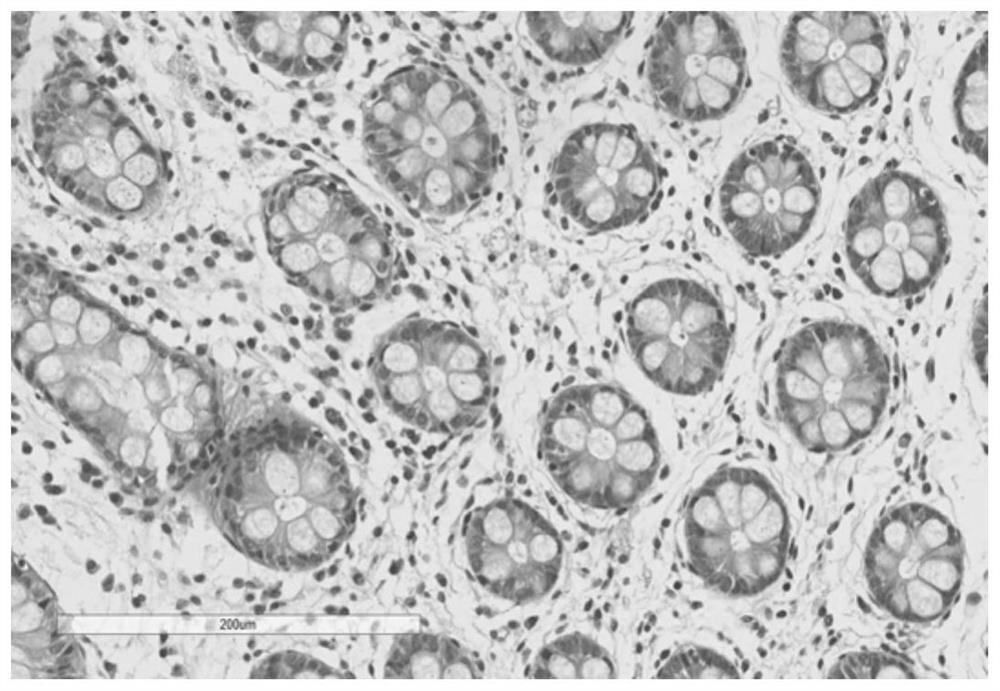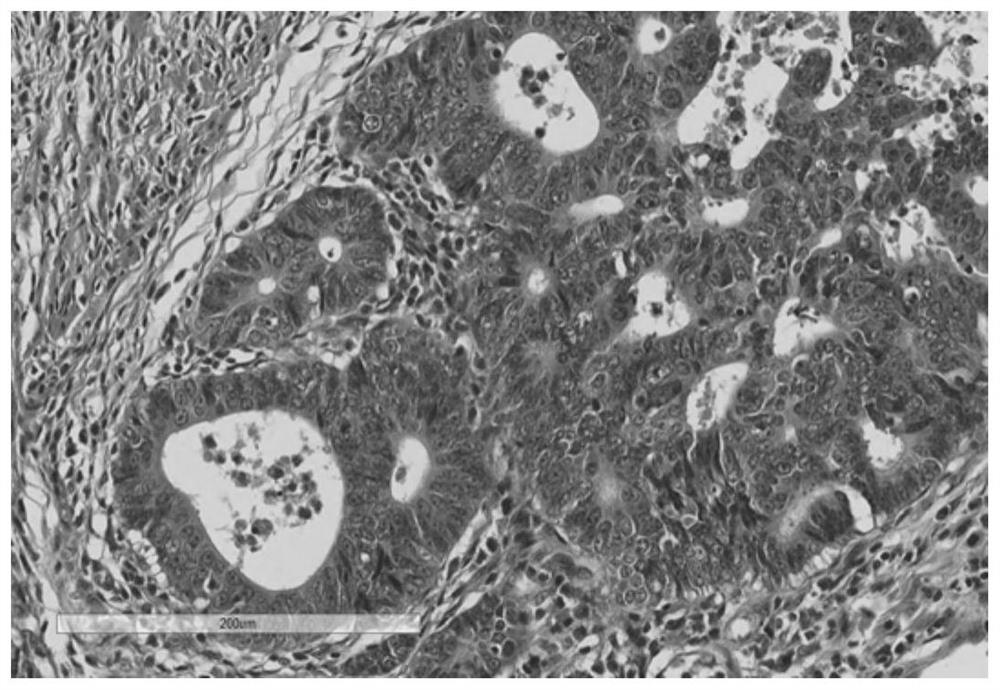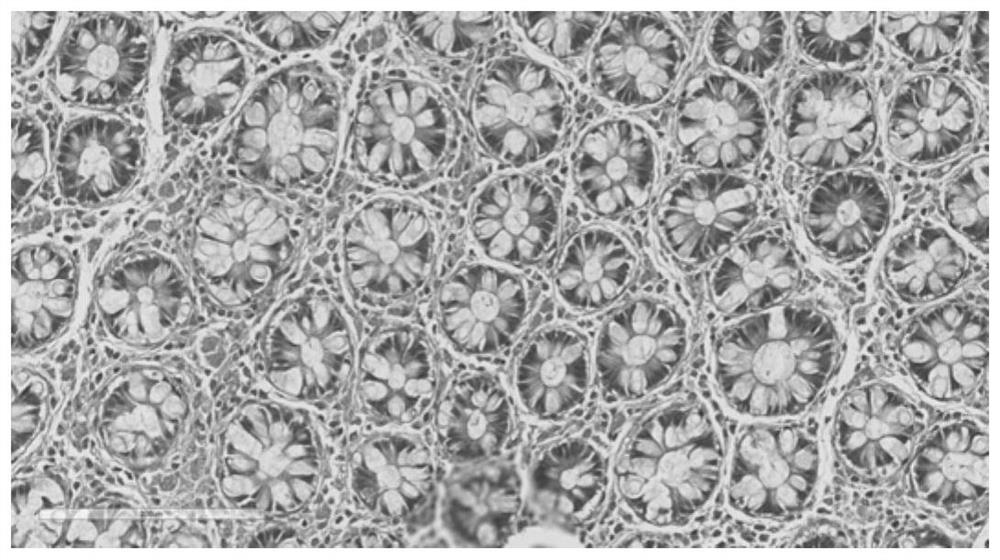Tissue bank specimen cryopreservation liquid and application thereof
A cryopreservation solution and cryopreservation technology, applied in the field of biomedicine, can solve the problems of inaccurate simulation of the number of biological downstream molecules and markers at all levels, reduction of thermodynamic free energy, and accelerated degradation of biological specimens, so as to avoid edema or dehydration , improve living conditions, and maintain the effect of gloss
- Summary
- Abstract
- Description
- Claims
- Application Information
AI Technical Summary
Problems solved by technology
Method used
Image
Examples
Embodiment 1
[0030] A tissue bank specimen cryopreservation solution according to an embodiment of the present invention includes the following components: 17.5 g of sodium chloride, 19.4 g of potassium chloride, 42.6 g of disodium hydrogen phosphate, 6 g of sodium dihydrogen phosphate, 200 g of dextran, and glucose 100g, guanidine thiocyanate 236.3g, ammonium thiocyanate 304.5g, glycerol 1L.
[0031] The preparation method of the above tissue bank specimen cryopreservation solution:
[0032] Weigh sodium chloride, potassium chloride, disodium hydrogen phosphate, sodium dihydrogen phosphate, dextran, glucose, guanidine thiocyanate, ammonium thiocyanate, and glycerin according to the above mass, and place them in a volumetric flask. The volume of ionized water was adjusted to 10L, fully dissolved, and the pH was adjusted to 7.4 to obtain the tissue bank specimen cryopreservation solution.
Embodiment 2
[0034] In this example, the tissue bank specimen cryopreservation solution and tap water of Example 1 were respectively used to cryopreserve rectal cancer specimens.
[0035]Specific experimental method: The tissue bank specimen cryopreservation solution and tap water of Example 1 were placed in a 4°C refrigerator for pre-cooling for 4 hours, and the same part of rectal cancer specimens were taken and immersed in the tissue bank specimen cryopreservation solution and tap water of Example 1 respectively. , and freeze for 1 day in -80℃ ultra-low temperature refrigerator. Observe the color and luster of the frozen specimen, and observe the cell state of the specimen under a high magnification microscope.
[0036] The experimental results are as Figure 1 to Figure 4 shown. Observation shows that the color of rectal cancer specimens soaked in tap water is dull; figure 1 and figure 2 It can be seen that the paracancerous specimens and cancer tissues of the rectal cancer specim...
Embodiment 3
[0038] In this example, the tissue bank specimen cryopreservation solution and tap water of Example 1 were respectively used for cryopreservation of gastric cancer specimens.
[0039] Specific experimental method: The tissue bank specimen cryopreservation solution and tap water of Example 1 were respectively placed in a 4°C refrigerator for pre-cooling for 4 hours, and the same part of gastric cancer specimens were immersed in the tissue bank specimen cryopreservation solution and tap water of Example 1, respectively. And freeze at -80 ℃ ultra-low temperature refrigerator for 1 day. Observe the color and luster of the frozen specimen, and observe the cell state of the specimen under a high magnification microscope.
[0040] The experimental results are as Figure 5 to Figure 8 shown. Observation shows that the color of gastric cancer specimens soaked in tap water is dull; Figure 5 and Image 6 It can be seen that the paracancerous specimens and cancer tissues of gastric c...
PUM
 Login to View More
Login to View More Abstract
Description
Claims
Application Information
 Login to View More
Login to View More - R&D Engineer
- R&D Manager
- IP Professional
- Industry Leading Data Capabilities
- Powerful AI technology
- Patent DNA Extraction
Browse by: Latest US Patents, China's latest patents, Technical Efficacy Thesaurus, Application Domain, Technology Topic, Popular Technical Reports.
© 2024 PatSnap. All rights reserved.Legal|Privacy policy|Modern Slavery Act Transparency Statement|Sitemap|About US| Contact US: help@patsnap.com










